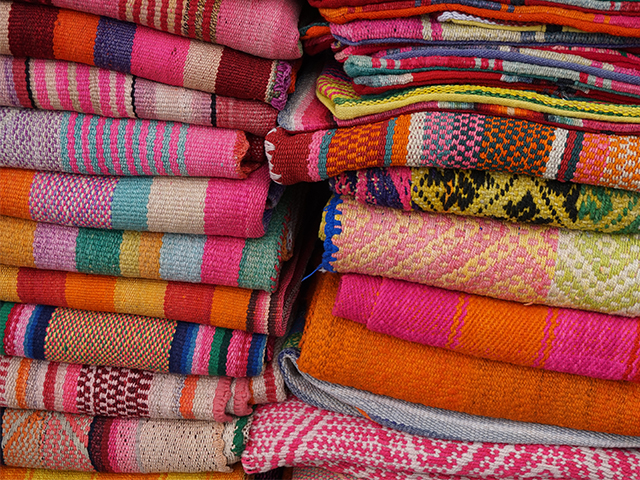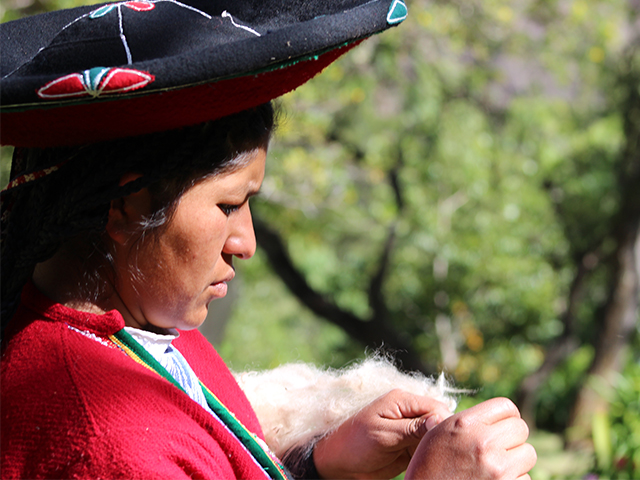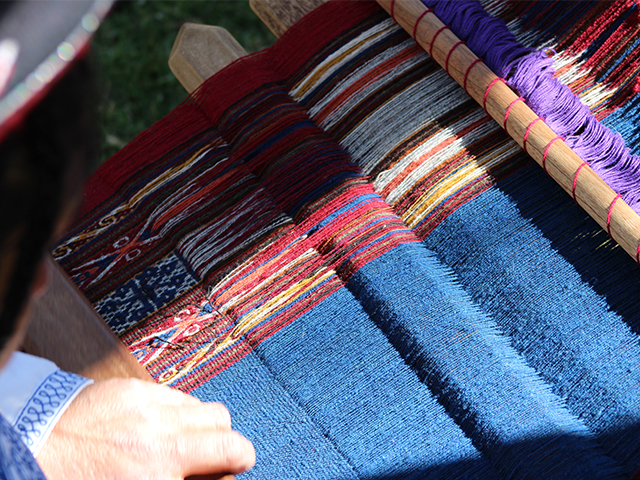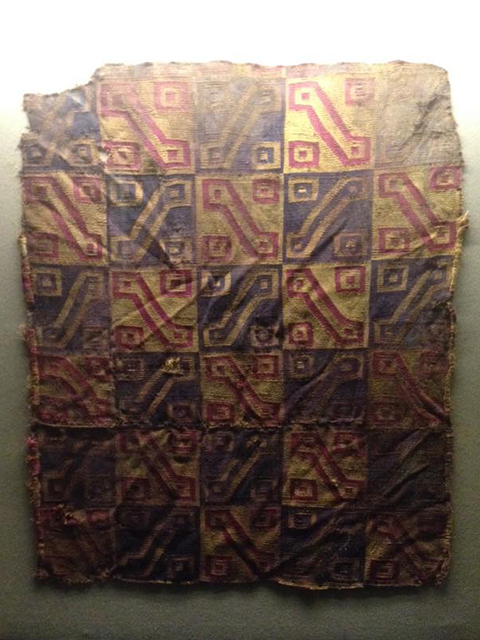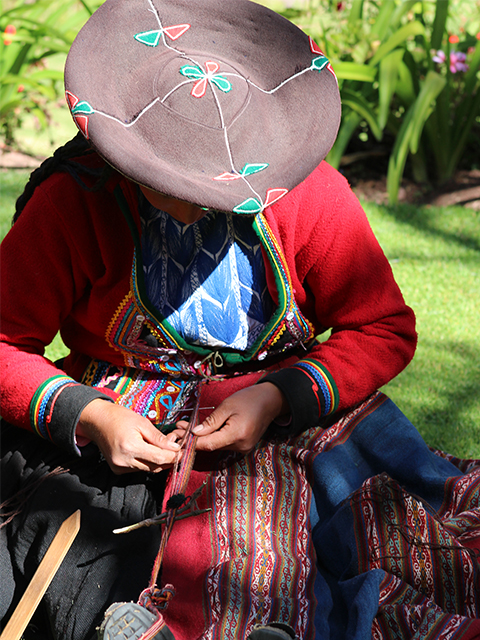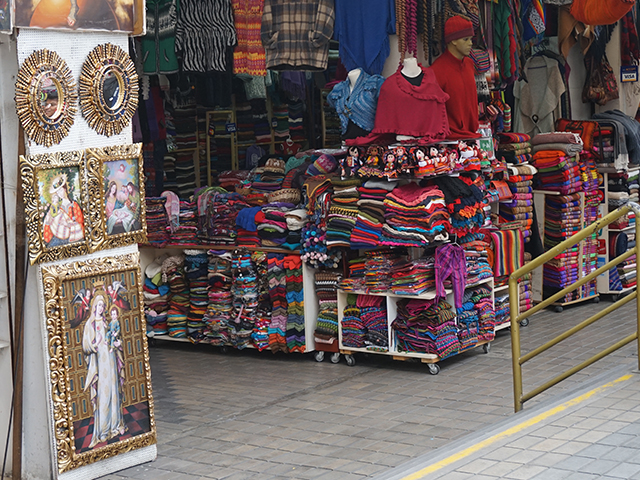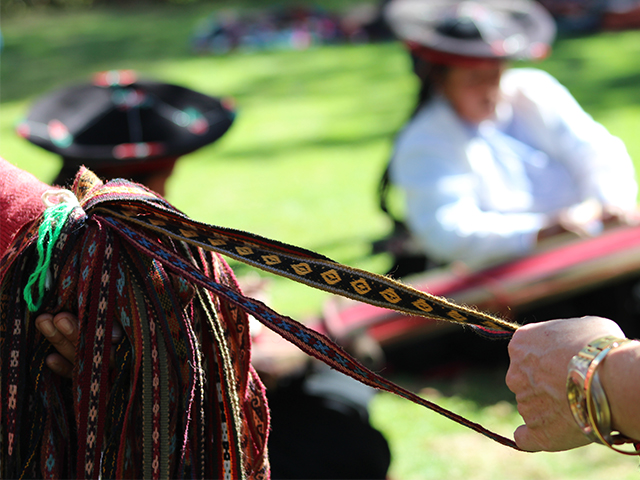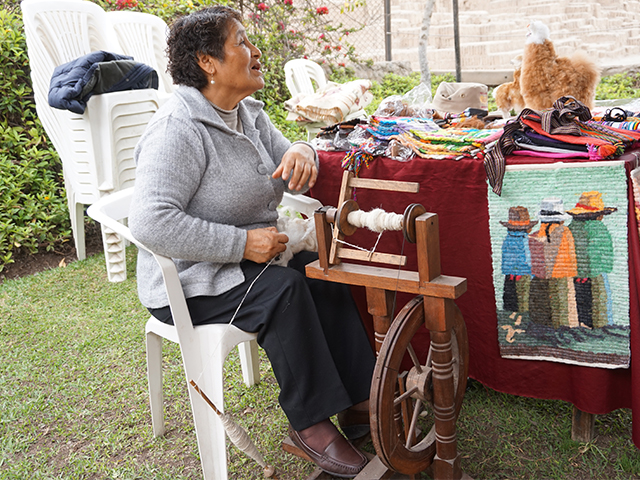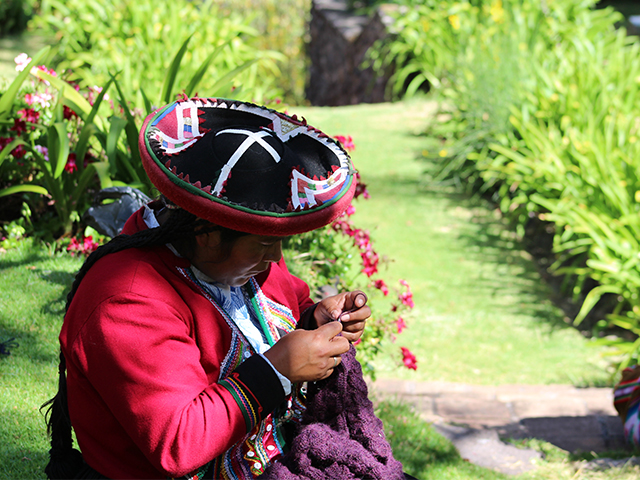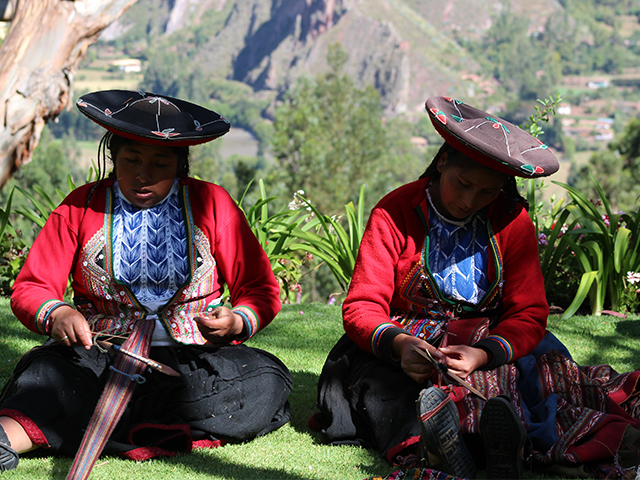“I have learned that each and every piece of cloth embodies the spirit, skill, and personal history of an individual weaver… It ties together with an endless thread the emotional life of my people.”
― Nilda Callanaupa Alvarez, Aracari specialist and Peruvian author of ‘Weaving in the Peruvian Highlands: Dreaming Patterns, Weaving Memories’
Go to Aracari Shop
Everywhere you go in Peru, you’ll see textiles on sale. The markets are adorned with the vibrant warm hues of traditional blankets, ponchos, and the famous chullo hats (read our blog here), woven with care from the finest alpaca wool. A perfect memento from your trip, and guaranteed to keep you warm through a North American or European winter.
With the growing popularity of their handiwork, artisans and textile businesses have extended their production beyond the traditional garments to appeal to the tastes of international tourists, and now table cloths, place mats, belts and bags are all available with the iconic patterns of the Andes. Even smaller trinkets and souvenirs like pens and fridge magnets are decked out in traditional patterns.
Pre-Inca beginnings
Peru is actually the country with the longest tradition of textile production, going back over 10,000 years, and predating pottery. The Chavin civilisation is generally credited with inventing the backstrap loom and many of the weaving techniques that have been passed down from generation to generation. What began as a simple process of spinning fibers and moving them across nets and cords has developed into a highly technical and skilled craft.
Following the Chavin, the coastal Paracas and Nazca cultures made beautiful and intricate embroideries and tapestries. With the dry desert conditions, many of these were preserved in underground tombs, giving us many clues to understand their way of life, in the absence of any written records.
The warmongering Wari were the predecessors to the Inca, who created vivid abstract tapestries depicting deities and other cultural observations, and spread their craft to as they expanded throughout much of modern day Peru. If the patterns look familiar, it’s because their abstract designs influenced the Bauhaus School and other early 20th century artists.
Incan Textiles
The Incas inherited a long and highly developed tradition of textiles. They dyed alpaca fiber and wove it into specific patterns and shapes, representing the area and family the weaver was from, and to demonstrate the wealth of the nobility. They also used their textiles to honor Pacamama, Mother Earth. Rather than abstract patterns, the shapes convey many layers of meaning and many designs feature flowers, rivers, the sun and the stars.
The Inca had no formal currency, and instead used textiles as part of a highly ritualised custom of gift giving to assert control over their subject groups. They set up large textile producing centres across the empire with highly skilled men and women creating huge quantities of textiles.
Colonial period: destruction and change
As the Spanish imposed their law and culture on the indigenous people of Peru, and the Incan empire was crushed, so was traditional textile production, as the Spanish did not want competition for their artisans in Europe. A new system was set up to produce European style cloth, introducing new materials from sheep, silk and metallic threads.
Although the Spanish attempted to stamp out the production of traditional textiles, they continued to be produced using alpaca and vicuña, and even evolved, embracing the exotic additions of metallic threads and silk.
Revival and preservation
Over the years many of the techniques and materials of traditional weaving have been eroded by synthetic fabrics and artificial dyes, with artisans favouring these alternatives as they are cheaper and less labour intensive.
However, there are a growing number of community led projects aiming to preserve traditional weaving techniques, and help artisans make their craft economically viable. One such organisation is the Centro de Textiles Tradicionales de Cuzco. The CTTC is a non-profit organisation that promotes the empowerment of weavers through the sustainable practice of Peruvian ancestral textiles in the Cusco region. Through workshops, opportunities, and the promotion of their textile art, the CTTC enables weavers to maintain their identity and textile traditions while improving their quality of life. They run weaving demonstrations and classes for visitors, and Aracari can arrange special visits to their weaving groups.
Contemporary fashion
And now, besides ongoing traditional use, and filling the backpacks of tourists, Peruvian textiles are hitting the runways, and adorning the pages of high fashion magazines world-wide. In Peru, contemporary designers are paying homage to the traditional textiles, by using their techniques and patterns in their twenty-first century creations.
ESCUDO is one such fashion house with a commitment to the development and preservation of artisanal techniques and materials. Their manifesto is to combine a passion for design with Peru’s vast cultural wealth. And they’ve taken their creations to runways around the world, including Miami and Copenhagen. Their philosophy echoes that of Nilda Callanaupa Alvarez at the beginning of this blog:
“Each piece of clothing has a storyline that can be traced back to the knitter who hand–wove it, the alpaca that gave up its coat, or even centuries back – to when these knitting traditions were born. Within each garment lies a story…and once worn, you become a part of it”
You can buy Peruvian textiles all over Peru, both in the local markets, and specialty shops in Lima and Cusco. We recommend the following:
LIMA
Artesanías Petit Thouars
Av. Petit Thouars 5321, Miraflores, Lima
Open daily: 10:30am-9pm
A great handicraft market with numerous stalls selling items from throughout Peru. Bargaining expected.
Kuna Alpaca
Larcomar Shopping Center, Miraflores, Lima (and various outlets in Lima)
Tel. 241-3484
Open daily: 10am-10pm
Fine Alpaca garments
Concept Store Cajamarca 219
Calle Cajamarca 219, Lima
Tel. 250-1742
Monday 1pm-6pm, Tuesday – Thursday, Sunday 9am-9pm,
Friday – Saturday 9am-11pm
Housed in a former casona, this combination showroom and café features hand-woven alpaca clothing and furniture made from vintage alpaca ponchos.
CUSCO
Center for Traditional Textiles of Cusco
Av. El Sol 603
Tel. (084) 228-117 / 236-880
Monday – Friday: 8am-8pm; Saturday: 7:30am-8pm;
Sunday: 9am-8pm
CTTC is a non-profit organization founded in 1996 devoted to fostering traditional weaving techniques. The Center works with five communities situated in the valley around Cusco. The best place to buy high quality textiles in Cusco.
Josefina Olivera
Plaza de Armas – Portal Comercio 173
Tel. (084) 233-484 / 225-601
Open daily: 9am-12pm, 3pm-9pm
An impressive collection of unique and antique weavings and ponchos that is a museum as much as a store. A great place to find a one-of-a-kind textile.
If you’re interested in scoping out the finest textiles while in Lima, we can arrange an exclusive shopping trip with one of our local ‘friends in the city’, an ex-model, fashion buyer, and all-round expert on sourcing Peru’s finest products. Contact us now at travel@aracari.com
Some of the information in this blog was taken from the Centro de Textiles Tradicionales de Cuzco. If you’re interested in reading more about the history and preservation of traditional textiles in Peru, have a look at their website.

